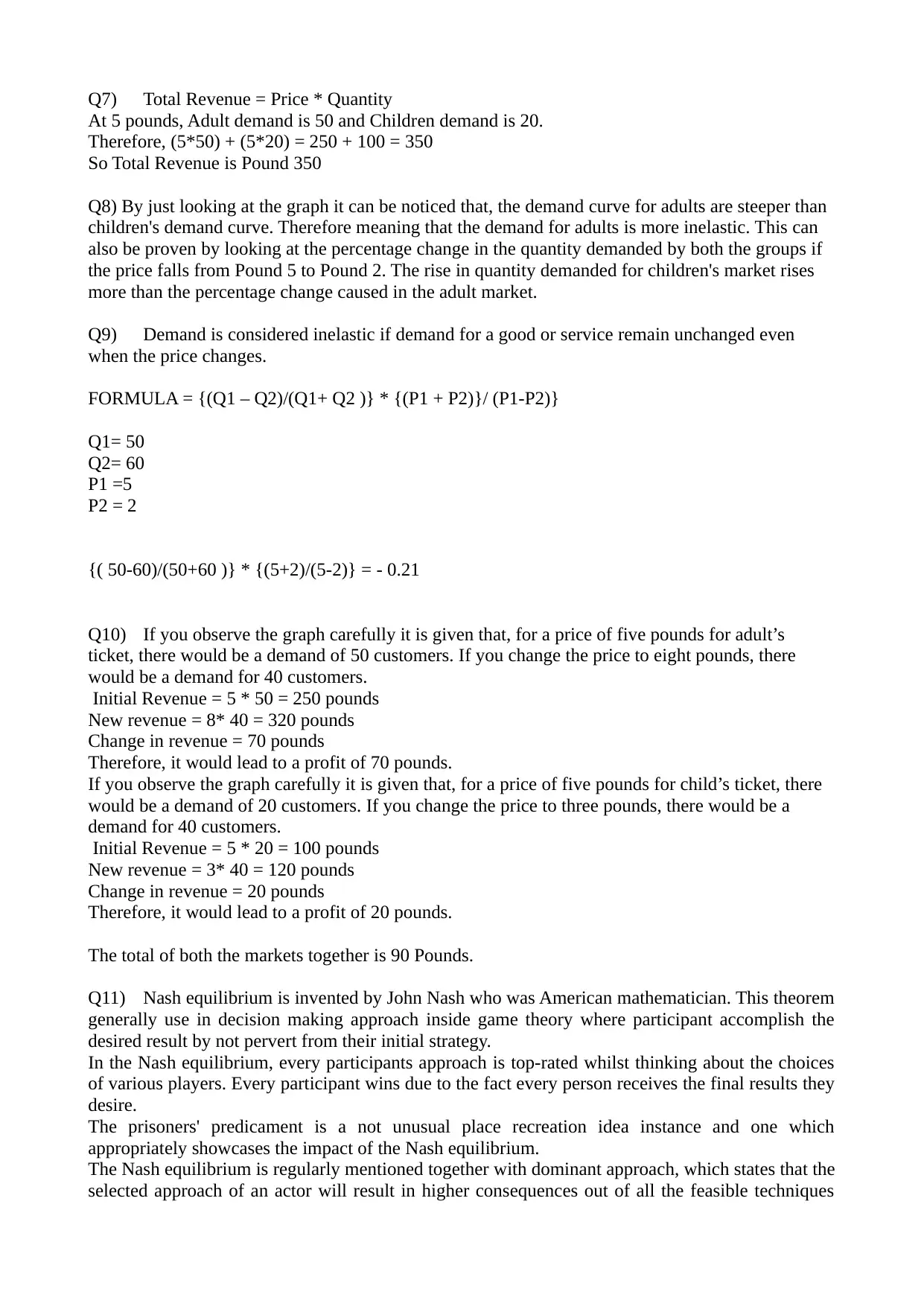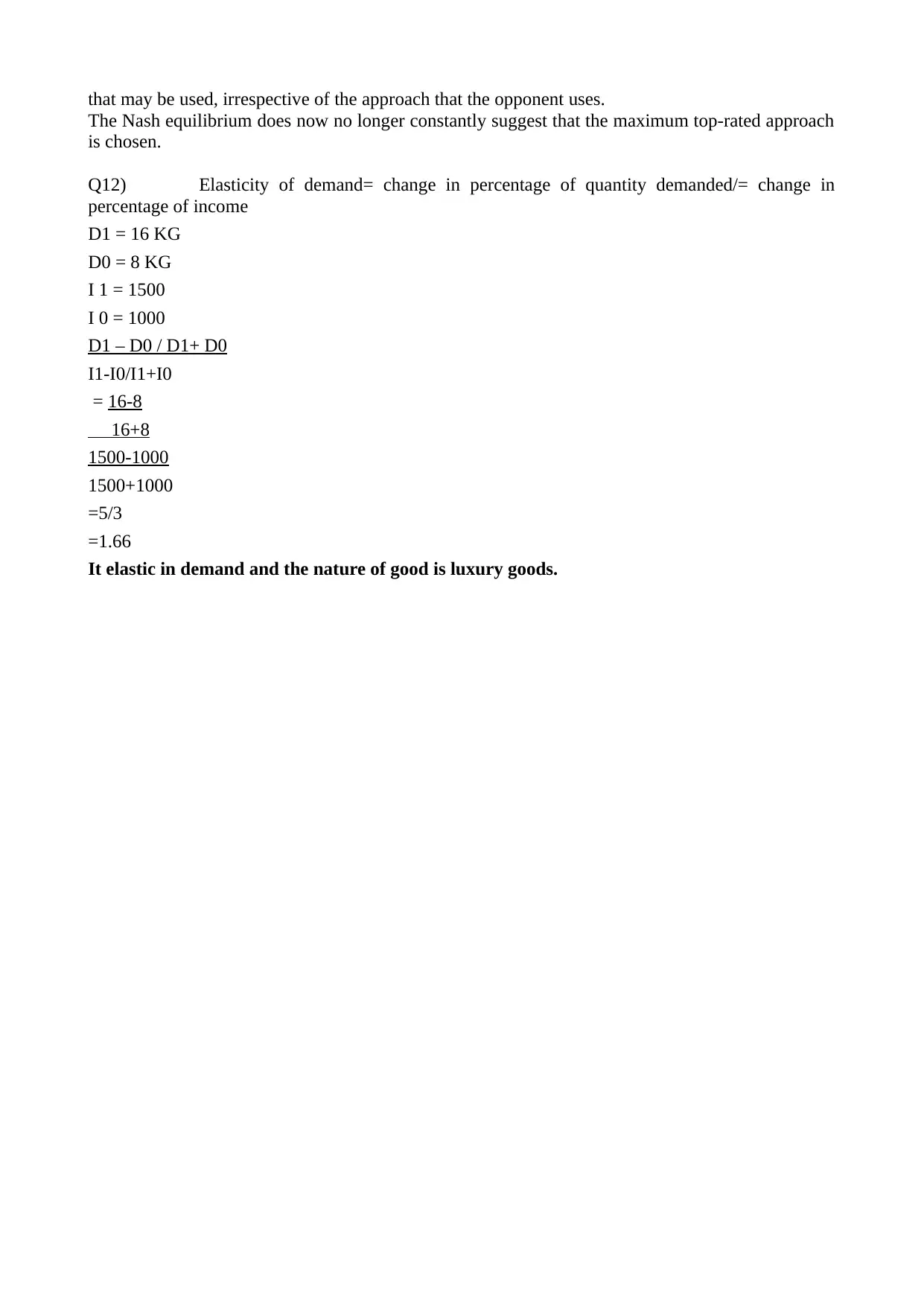Economics Questions: Revenue Calculation, Elasticity, and Equilibrium
VerifiedAdded on 2023/06/07
|4
|638
|127
Homework Assignment
AI Summary
This economics assignment provides solutions to questions related to revenue calculation, demand elasticity, and Nash equilibrium. It calculates total revenue based on adult and children's ticket demand at a given price, analyzes the elasticity of demand for adults versus children using graphical data and percentage change calculations, and applies the concept of Nash equilibrium with the prisoner's dilemma example. Furthermore, it includes revenue change analysis based on price adjustments for adult and child tickets and concludes with an elasticity of demand calculation to determine if a good is a luxury item based on income changes. Desklib offers a wealth of similar assignments and study tools for students.
1 out of 4











![[object Object]](/_next/static/media/star-bottom.7253800d.svg)